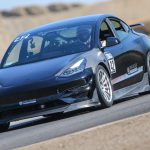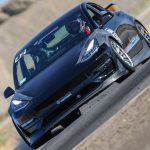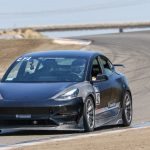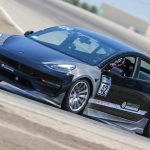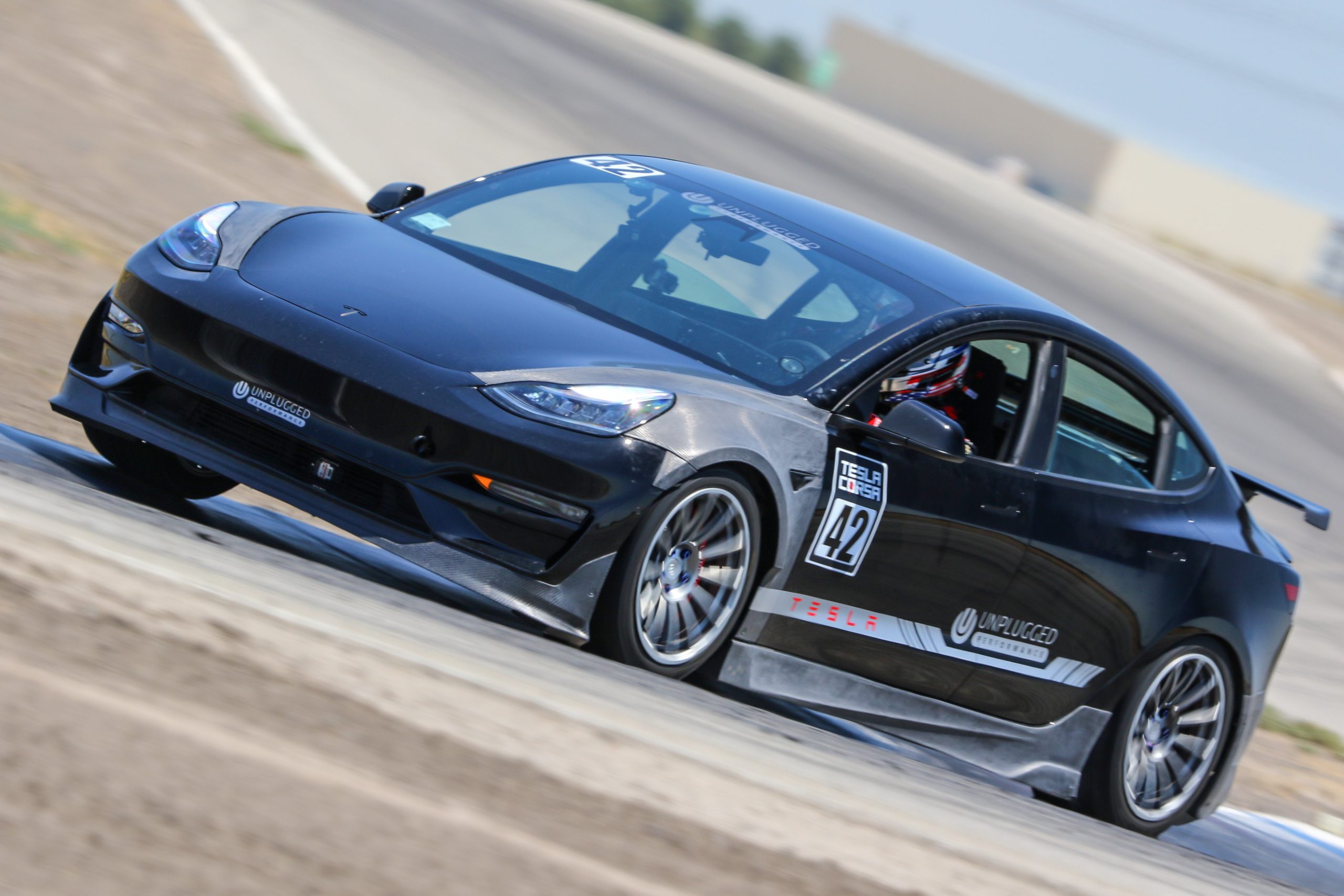
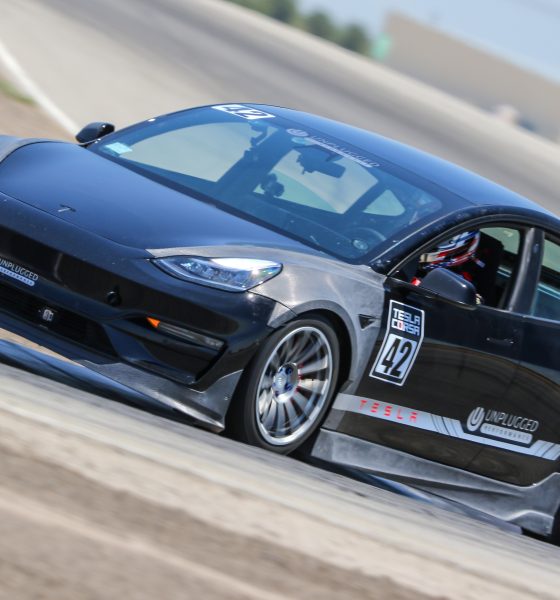
News
Unplugged Performance Tesla Model 3 sets record ahead of Pikes Peak attempt
The Tesla Model 3 Performance is already a track weapon straight out of the factory. With Track Mode, a stock Model 3 Performance could completely dominate high performance sedans on the closed circuit. But with special parts that are designed to increase the vehicle’s track capability even further, the Model 3 Performance becomes something that is downright frightening.
Around two weeks ago, Tesla aftermarket specialist and tuning house Unplugged Performance announced its entry to the esteemed Pikes Peak International Hill Climb with legendary racer driver Randy Pobst behind the wheel. Pobst is the perfect driver for such an event, considering that he was directly involved with Tesla’s creation of the Model 3 Performance’s Track Mode. With Pobst behind the wheel, Unplugged Performance’s Model 3 has the potential to complete the Pikes Peak Hill Climb, and possibly surprise a number of critics along the way.
Interestingly enough, the Unplugged Performance team did not have a car for the event when it made its Pikes Peak Hill Climb announcement. Such a vehicle was only picked up on the night of July 17, and later equipped with the company’s Ascension R package. Unplugged Performance’s Ascension R kit made its debut with Tesla owner enthusiast Erik Strait’s Model 3, which was sent to Japan earlier this year. Strait’s vehicle, the first of the company’s Ascension R units, set records in Japan during its brief stay in the country.
- Tesla Model 3 equipped with Unplugged Performance’s Ascension R package. (Credit: Unplugged Performance)
- Tesla Model 3 equipped with Unplugged Performance’s Ascension R package. (Credit: Unplugged Performance)
Tesla Model 3 equipped with Unplugged Performance’s Ascension R package. (Credit: Unplugged Performance)
The Model 3 picked up by the Unplugged Performance team on July 17 would become the company’s second Ascension R unit. The modification of the Model 3 Performance would begin on July 20 and end on Fright night, July 24. With the car completed, the team drove over to Buttonwillow on Autopilot to ensure that the trip was as safe as possible. At around 2 a.m. on July 25, the Model 3 Ascension R took its first charge. Interestingly enough, July 25 also happened to be the day of TeslaCorsa 9, an event where Tesla owners get together for a day on the track.
In a message to Teslarati, the Unplugged Performance team stated that they did not really expect the freshly modded Model 3 to set new records right out of the bat. The vehicle’s driver, Oscar Jackson Jr., after all, has never driven a Tesla prior to the event. Jackson was used to racing vehicles like the Porsche GT3 RS, but he did not have any experience with high performance EVs stepping into the Model 3. It was then surprising to see that before lunchtime, Unplugged Performance’s Model 3 Ascension R broke the record for fastest production Tesla on street tires on the Buttonwillow track, running a 1:54.266 on 200 tread wear tires.
What was even more interesting was that later during the day, the Model 3 recorded an even more impressive lap despite its battery being halved. The team equipped the Model 3 with Pirelli slicks, and the vehicle ended up running a 1:53.277 lap despite a 50% state of charge. In a statement following his experience, Jackson, noted that he was incredibly impressed with the Tesla Model 3. According to the racer, the Model 3 was already a great car from the factory, but with an additional boost from Unplugged Performance’s parts, the vehicle had the potential to rival even the best track weapons available today.
- Tesla Model 3 equipped with Unplugged Performance’s Ascension R package. (Credit: Unplugged Performance)
- Tesla Model 3 equipped with Unplugged Performance’s Ascension R package. (Credit: Unplugged Performance)
Tesla Model 3 equipped with Unplugged Performance’s Ascension R package. (Credit: Unplugged Performance)
“It was a pretty mind blowing experience to have this be my first time driving a Tesla. Despite it being a shakedown day for Unplugged’s latest build, the car was surprisingly well sorted and it inspired immediate confidence. The brakes in particular were a big surprise given that the car is a lot heavier than what I’m used to racing with. Unplugged’s “BFB” carbon ceramic kit allowed me to brake deep into the corner and I found myself using braking points comparable to what I use when racing the Porsche GT3 RS and spec Miatas!
“The car was already really well prepared so we did not need to change much. The suspension was great off the bat and really well dialed-in. As the day progressed, we simply raised the rear up a little and added a bit more compression. Since the car was factory power and factory traction control I found myself being interrupted by the car’s nannies… Overall the car is a rocket ship (no SpaceX pun intended)! If I had more time with it I’m certain I can go a lot faster. I’m looking forward to my next time behind the wheel of it!” he said.
Watch a rather entertaining run of Unplugged Performance’s Model 3 Ascension R in the video below.

Elon Musk
SpaceX issues statement on Starship V3 Booster 18 anomaly
The incident unfolded during gas-system pressure testing at the company’s Massey facility in Starbase, Texas.

SpaceX has issued an initial statement about Starship Booster 18’s anomaly early Friday. The incident unfolded during gas-system pressure testing at the company’s Massey facility in Starbase, Texas.
SpaceX’s initial comment
As per SpaceX in a post on its official account on social media platform X, Booster 18 was undergoing gas system pressure tests when the anomaly happened. Despite the nature of the incident, the company emphasized that no propellant was loaded, no engines were installed, and personnel were kept at a safe distance from the booster, resulting in zero injuries.
“Booster 18 suffered an anomaly during gas system pressure testing that we were conducting in advance of structural proof testing. No propellant was on the vehicle, and engines were not yet installed. The teams need time to investigate before we are confident of the cause. No one was injured as we maintain a safe distance for personnel during this type of testing. The site remains clear and we are working plans to safely reenter the site,” SpaceX wrote in its post on X.
Incident and aftermath
Livestream footage from LabPadre showed Booster 18’s lower half crumpling around the liquid oxygen tank area at approximately 4:04 a.m. CT. Subsequent images posted by on-site observers revealed extensive deformation across the booster’s lower structure. Needless to say, spaceflight observers have noted that Booster 18 would likely be a complete loss due to its anomaly.
Booster 18 had rolled out only a day earlier and was one of the first vehicles in the Starship V3 program. The V3 series incorporates structural reinforcements and reliability upgrades intended to prepare Starship for rapid-reuse testing and eventual tower-catch operations. Elon Musk has been optimistic about Starship V3, previously noting on X that the spacecraft might be able to complete initial missions to Mars.
Investor's Corner
Tesla analyst maintains $500 PT, says FSD drives better than humans now
The team also met with Tesla leaders for more than an hour to discuss autonomy, chip development, and upcoming deployment plans.

Tesla (NASDAQ:TSLA) received fresh support from Piper Sandler this week after analysts toured the Fremont Factory and tested the company’s latest Full Self-Driving software. The firm reaffirmed its $500 price target, stating that FSD V14 delivered a notably smooth robotaxi demonstration and may already perform at levels comparable to, if not better than, average human drivers.
The team also met with Tesla leaders for more than an hour to discuss autonomy, chip development, and upcoming deployment plans.
Analysts highlight autonomy progress
During more than 75 minutes of focused discussions, analysts reportedly focused on FSD v14’s updates. Piper Sandler’s team pointed to meaningful strides in perception, object handling, and overall ride smoothness during the robotaxi demo.
The visit also included discussions on updates to Tesla’s in-house chip initiatives, its Optimus program, and the growth of the company’s battery storage business. Analysts noted that Tesla continues refining cost structures and capital expenditure expectations, which are key elements in future margin recovery, as noted in a Yahoo Finance report.
Analyst Alexander Potter noted that “we think FSD is a truly impressive product that is (probably) already better at driving than the average American.” This conclusion was strengthened by what he described as a “flawless robotaxi ride to the hotel.”
Street targets diverge on TSLA
While Piper Sandler stands by its $500 target, it is not the highest estimate on the Street. Wedbush, for one, has a $600 per share price target for TSLA stock.
Other institutions have also weighed in on TSLA stock as of late. HSBC reiterated a Reduce rating with a $131 target, citing a gap between earnings fundamentals and the company’s market value. By contrast, TD Cowen maintained a Buy rating and a $509 target, pointing to strong autonomous driving demonstrations in Austin and the pace of software-driven improvements.
Stifel analysts also lifted their price target for Tesla to $508 per share over the company’s ongoing robotaxi and FSD programs.
Elon Musk
SpaceX Starship Version 3 booster crumples in early testing
Photos of the incident’s aftermath suggest that Booster 18 will likely be retired.
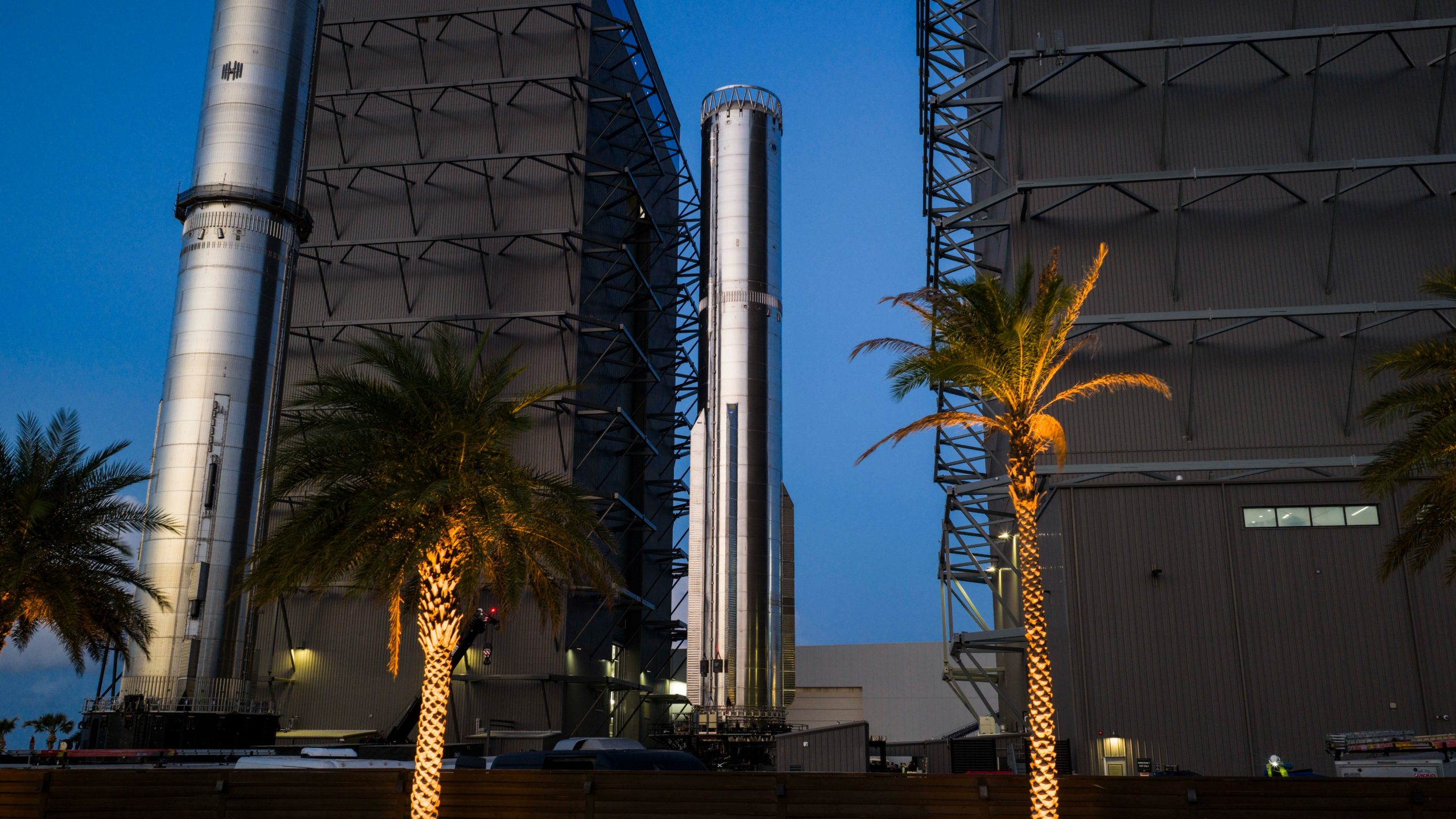
SpaceX’s new Starship first-stage booster, Booster 18, suffered major damage early Friday during its first round of testing in Starbase, Texas, just one day after rolling out of the factory.
Based on videos of the incident, the lower section of the rocket booster appeared to crumple during a pressurization test. Photos of the incident’s aftermath suggest that Booster 18 will likely be retired.
Booster test failure
SpaceX began structural and propellant-system verification tests on Booster 18 Thursday night at the Massey’s Test Site, only a few miles from Starbase’s production facilities, as noted in an Ars Technica report. At 4:04 a.m. CT on Friday, a livestream from LabPadre Space captured the booster’s lower half experiencing a sudden destructive event around its liquid oxygen tank section. Post-incident images, shared on X by @StarshipGazer, showed notable deformation in the booster’s lower structure.
Neither SpaceX nor Elon Musk had commented as of Friday morning, but the vehicle’s condition suggests it is likely a complete loss. This is quite unfortunate, as Booster 18 is already part of the Starship V3 program, which includes design fixes and upgrades intended to improve reliability. While SpaceX maintains a rather rapid Starship production line in Starbase, Booster 18 was generally expected to validate the improvements implemented in the V3 program.
Tight deadlines
SpaceX needs Starship boosters and upper stages to begin demonstrating rapid reuse, tower catches, and early operational Starlink missions over the next two years. More critically, NASA’s Artemis program depends on an on-orbit refueling test in the second half of 2026, a requirement for the vehicle’s expected crewed lunar landing around 2028.
While SpaceX is known for diagnosing failures quickly and returning to testing at unmatched speed, losing the newest-generation booster at the very start of its campaign highlights the immense challenge involved in scaling Starship into a reliable, high-cadence launch system. SpaceX, however, is known for getting things done quickly, so it would not be a surprise if the company manages to figure out what happened to Booster 18 in the near future.
